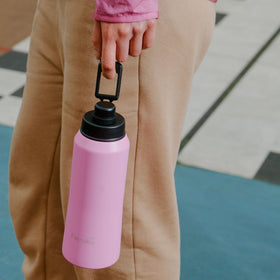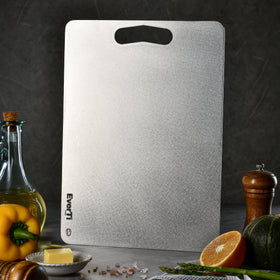
The many uses of castile soap
Castile soap is one of the multi-functional heroes of my house. I love it because it contains all natural ingredients that I recognize and that are good for the environment and for my skin, but I also love it because you can use it for so many things!

Uses for castile soap
You can use castile soap for so many things! Here’s a few ideas to get you started.
1. Wash your car - add it to some warm soapy water to use for getting the dirt of your car, then rinse your car as normal with fresh water.
2. Use castile soap to bath your pets - just wet your dog with warm water, then use a couple of squirts of castile soap (peppermint would be good) to make a lather. Keep the soap out of their eyes and ears, then rinse your dog off. If you’re going to wash your cat, use the unscented baby version, as cats can be allergic to essential oils.
3. Use castile soap to wash your baby - just use a little bit on a soft facewasher or cloth and gently wash baby’s body. This will help control where the soap goes, and means you won’t get it in baby’s eyes. Although a good castile soap is all natural, it doesn’t mean it’s tear free, so keep it away from baby’s face.
4. Use castile soap to clean your toilet - yep, you read that right. Just make up a spray from 2 cups of water, 1/8th cup of castile soap, and ½ teaspoon of tea tree oil. Spray the inside of the bowl (and the outside if you want!). Put some baking soda on your toilet brush and use that to scrub the inside of the bowl. Wipe down the outside of the toilet bowl with a cloth, flush the toilet and away you go! There’s a more detailed post here from Lisa Bronner.
5. Use it as hand soap - I have an old liquid soap pump that I leave on the kitchen bench, and every few weeks I fill it three quarters full with water, and one quarter full with citrus castile soap (my favourite for the kitchen). Diluting your soap like this does mean that it has a shorter life span, but as our kitchen sink is where we all wash hands after feeding dogs, cats, preparing dinners, coming in from outside, etc, we go through hand soap in the kitchen pretty quickly. This way, I cut down on the amount of soap the kids use (they sure do love to squirt soap, although I’m not sure what they actually do with it as their hands always seem just as dirty afterwards!), but you still get a good lather up.
6. Use it in the shower - it’s so mild on skin (even the tingly peppermint soap) that my notoriously dry skin is completely fine. I love the thick, creamy lather you get up, too. My husband uses it for shampoo, too, although I find that it doesn’t seem to work so well for my hair.
7. Use castile soap to wash clothes - you can use castile soap to make a laundry liquid. You can do 64 washes with just one cup of soap, according to this useful recipe.
8. Wash fruit and vegetables with castile soap - just add one tablespoon of unscented castile soap to 2 cups of water, and keep it in a squirt or spray bottle near where you wash your fruit and veg.
9. Scrub your stovetop with castile soap - make up a solution of 1/3 castile soap to 2/3 water. Sprinkle some baking soda on your stove top, spray the castile soap solution on it, leave for ten minutes or so and then give it a scrub. You can also use this method on the bathtub or bathroom tiles. You can use the diluted soap mix as a general purpose cleaner around the house, or for mopping floors, too.
10. Get rid of garden pests - put a teaspoon of castile soap into a litre of water, and spray it on your plants. Works a treat!
What is castile soap made from?
Castile soap is made from vegetable oils, not animal fats and petrochemicals. The name comes from where the soap was made, in the Castile region of Spain, although there are records showing that it was made even earlier in Aleppo, in Syria, thousands of years ago. The basis of castile soap is olive oil, but you’ll find that other vegetable oils are used, such as coconut oil, hemp oil, palm oil and jojoba oil.
Okay, time to put the nerd hat on! The oil is mixed with an alkali: sodium hydroxide for solid soap, and potassium hydroxide for liquid soap. Although these are harsh chemicals, the magic of saponification (the chemical reaction that takes place between the oils and the acids during the soap making process) means that these disappear and become glycerin and potassium or sodium salt.
If you’re still feeling nerdy, and want more information about how this process works, check out this link from Dr Bronners. You can also add essential oils to make it smell nice, and some Vitamin E and citric acid to keep the soaps fresh.
And that’s it – that’s all you’ll find in a good quality castile soap. That’s why they’re biodegradable, and so much better for your skin and the environment than other soaps which can be a complex chemical mashup of detergents.
Castile soap is:
- Kind to the environment, as it is non toxic and biodegradable
- Gentle enough to use for the whole family (although it is best to choose unscented versions for babies and young children)
- Cheap! It can be diluted and used for many purposes
Like any other product that you buy, make sure that you check the ingredients on the back rather than the greenwash on the front of the pack. Hello Charlie stocks the Dr Bronner’s range of liquid castile soaps. We use them at home and at work, and we can highly recommend them!










